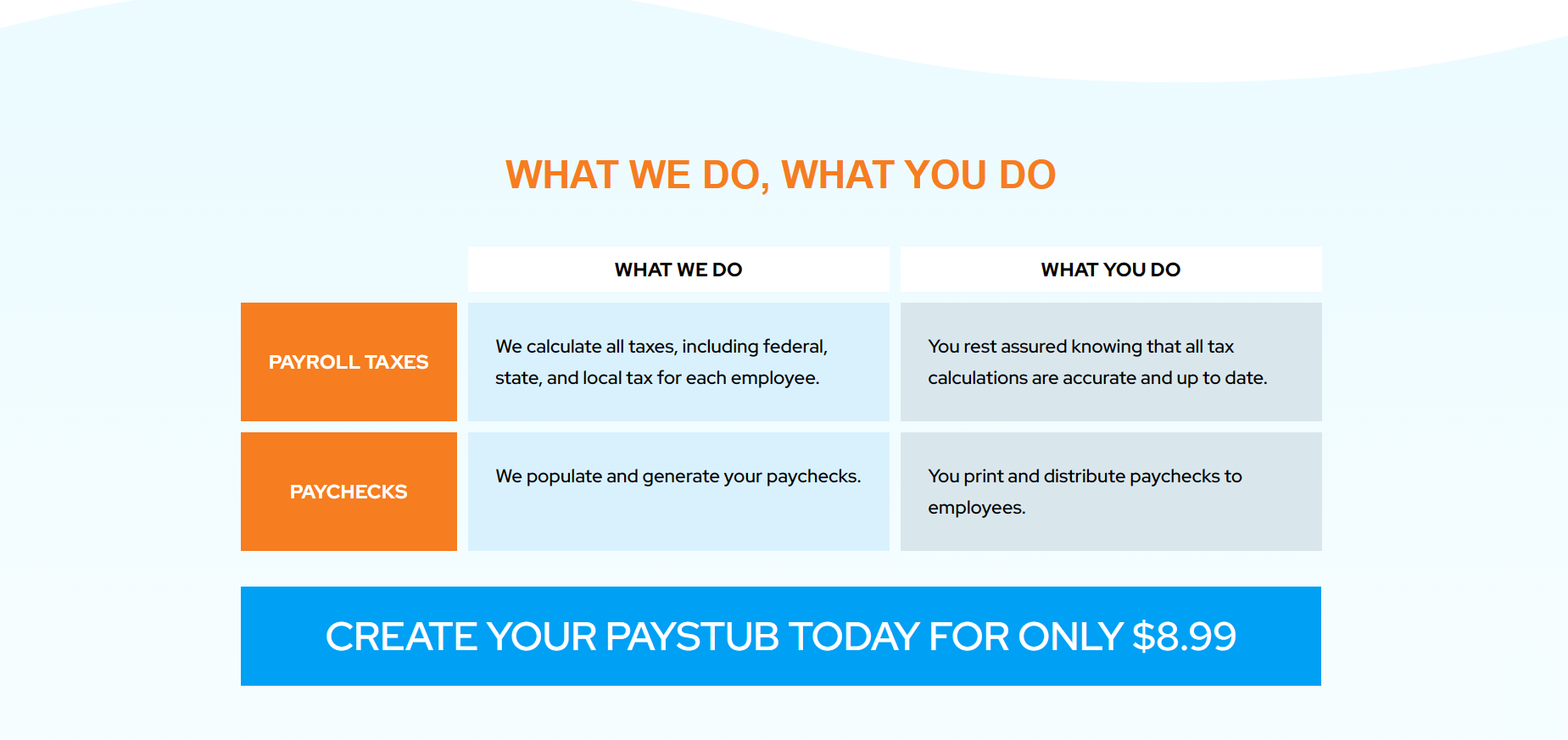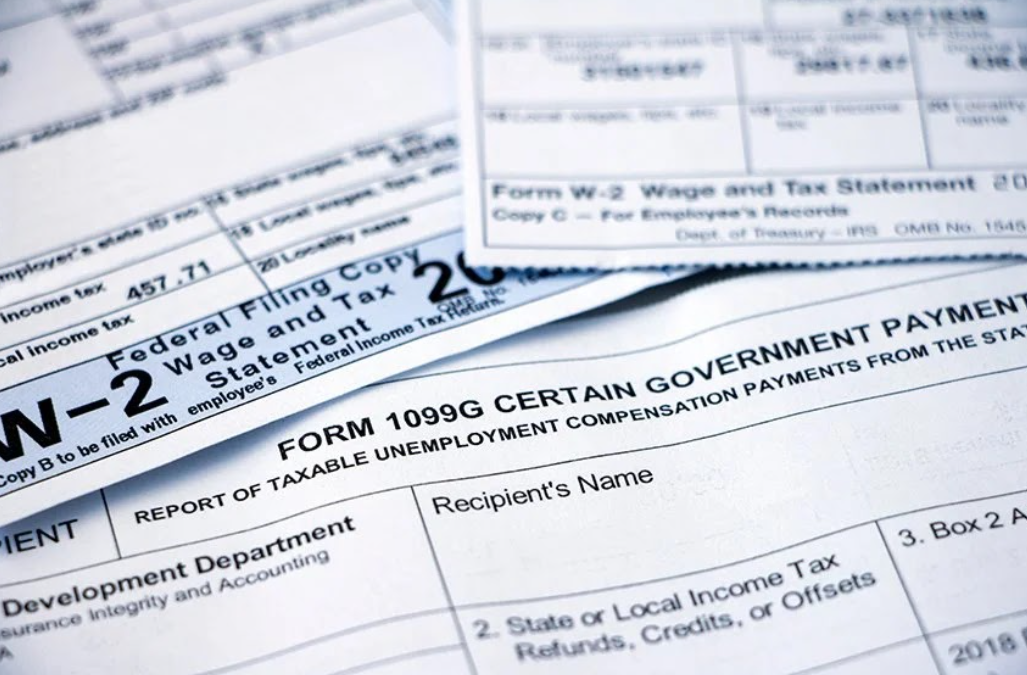While pay stubs provide a detailed snapshot of your earnings and deductions, the W-2 is an official report that your employer issues detailing your annual earnings and deductions withheld for tax filing purposes.
In this blog post, we at Check Stub Maker will offer our expert insights on how to make up pay stubs on line that can help you better understand and organize your end of year pay stubs and W-2 form in time for tax season.
Let’s get started!
What this article covers:
- Why Is My Final Pay Stub Different From My W-2?
- 3 Reasons Why the Gross Amount on Your End-Of-Year Pay Stub May Be Different Than the Amount on Your W-2
Why Is My Final Pay Stub Different From My W-2?
At first glance, you might assume that the final pay stub of the year and the W-2 form should mirror each other, given that both document your working days in pay stubs, earnings, and deductions for the year. But this isn’t actually the case, and here’s why.
As per our expertise, your final pay stub is a detailed breakdown of the last payment period of the year, including gross pay, taxes, and other deductions. It reflects the real-time calculations of your salary paystubs hours and withholdings for that particular pay period.
In contrast, the W-2 form is a summary of your total annual earnings and taxes withheld. As such, it essentially accounts for all adjustments made over the year, which might not be reflected in your pay stubs, including:
- benefits
- reimbursements
- other taxable items, like compensation or prizes
Based on our first-hand experience, these two documents often contain similar financial information due to the timing of certain payroll processes and tax treatments.
For instance, certain payroll deductions might be tax-exempt, affecting the final figures on the W-2 differently than they appear on paystubs created by us.
We’ve found that this can cause confusion due to the different categories and boxes found in the W-2 form, which often include various types of incomes and deductions.
These figures may not be immediately apparent on your final pay stub, and this can potentially lead to dates wrong on pay stub as a result.
In short, while your final pay stub and W-2 form both provide similar and critical financial information, their differences lie in the details and purpose. Recognizing these differences is essential for accurate financial planning and tax preparation.
3 Reasons Why the Gross Amount on Your End-Of-Year Pay Stub May Be Different Than the Amount on Your W-2
Understanding the discrepancies between your end-of-year pay stub and the W-2 form can be puzzling. Let’s unravel these mysteries, focusing on three key reasons for the differences in the gross amounts in these documents.
1. Year-End Pay Stubs Include Non-Taxable Income Items
Firstly, the end-of-year pay stub you make with us at Check Stub Maker may include non-taxable income items that aren’t reflected in the W-2’s gross income.
These items can range from certain employee reimbursements to other non-taxable allowances, like standard hours increased on my pay stub.
While these amounts add to your total income on the pay stub, they’re usually excluded from the gross income reported on the W-2 since they aren’t subject to federal income tax.
Our research indicates that this inclusion in one and the exclusion in the other can lead to a significant variance in the reported gross amounts.
That’s why it’s important to ensure that you create paystubs that reflect all of your financial information as accurately as possible when tax season rolls around.

2. Company-Sponsored Retirement Plan Participation
Another factor contributing to this discrepancy between end of year pay stubs and the W-2 is participation in company-sponsored retirement plans.
Our investigation demonstrated that contributions to retirement plans such as 401(k) are often pre-tax, leading to a reduction of your taxable income.
Therefore, the amount reported on your W-2 will be less than what appears on your final pay stub for the year simply because your end of year pay stub reflects the total earnings before such deductions.
3. Company Health Insurance Is A Pre-Tax Deduction
Finally, company health insurance premiums are typically pre-tax deductions. This means that these insurance premiums are deducted from your gross income before taxes are calculated.
This reduces your taxable income on the W-2, but the full gross income, including these premiums, still appears on your Check Stub Maker pay stubs.
Based on our first hand experience, this variance in record-keeping is another reason why your end of year paystubs and W-2 form might not align in terms of gross amounts.

Conclusion
In this blog post, we explored the vital differences between end of year pay stubs and W-2 forms, especially in terms of gross amounts in relation to taxable amounts.
And if you still have questions, we recommend putting your trust in Check Stub Maker. As a leading expert in the payroll industry, we can help you consistently create accurate financial records with our innovative paystub generator, so you can better compare and understand your pay stubs and W-2 forms.
Whether you’re self-employed, a small business owner, or just looking to get a better grasp on your personal finances, our digital payroll tools are tailored to meet your needs – from 3 months pay stubs to the final one of the year. So, use Check Stub Maker today for a clearer financial tomorrow!
If you want to learn more, why not check out these articles below:
- What Is a Advance Date on My Pay Stub Mean
- Medical Student What to Submit for Paystub
- Is It Easy to Backdate a Pay Stub
- Why Does My Pay Stub Have Pay Date Before End of Pay Period
- Where to Get Paystub From Company That Has Closed Down
- 3 Paystubs in One Month
- Monthly Pay Stubs or Biweekly
- Is It Illegal to Keep Check Stubs From the Employee When They Have Direct Deposit?
- What You Can Do If You Work Wont Give You Your Paystubs
- If My Pay Stub Says Vacation Time Do They Have to Give It to Me?
- How to Access Pay Stubs If Your Not a Best Buy Employee Anymore
- Letter From Employer Verifying No Pay Stub for Work Week
- Why You Should Always Ask for a Pay Stub
- Paystub Missing for the Days I Am Suing My Employer
- Get a Check Stubs with Job Verification




